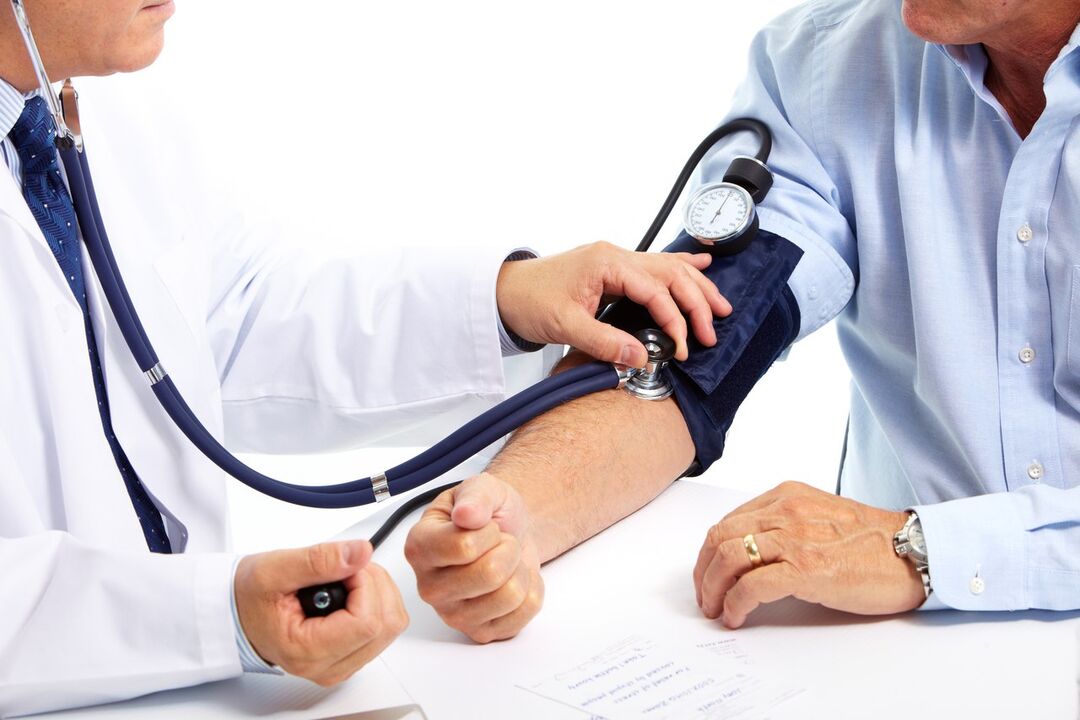
Everyone has heard of heart attacks and strokes - this is what we fear and try to avoid with all our might. And yet, these are the most common causes of death in hypertension and hypertension.
Arterial hypertension or hypertension is the most common and recognized diagnosis worldwide. Despite the fact that, according to statistics, every third person suffers from this disease, many things remain unclear, including the causes and treatment. How to prevent all these troubles? How to maintain health and quality of life? In this article we will try to answer these questions.
Hypertension (hypertension) - what is it?

According to the currently accepted classification, arterial hypertension is an increase in blood pressure above 140/90 mm. rt. Art. Today, there are two forms of hypertension:
- primary (or essential, that is, the cause is unknown) - characterized by an increase in blood pressure for no apparent reason;
- secondary (symptomatic) - the cause of increased blood pressure is associated with any internal organ (liver, kidney, lung, brain, endocrine glands).
As the name implies, the cause of essential hypertension, despite all the achievements of modern medicine, is not clear, so the only traditional method of treatment remains the elimination of high blood pressure with pills. And since pills relieve only the consequences without eliminating the cause, the importance of hypertension is acutely felt in the modern world. However, a group of medical researchers have developed a new concept for the development of hypertension, which explains the mechanism of the disease at the cellular level and has been confirmed by numerous studies. We will talk about this innovative approach.
First of all, any disease is a disruption in the functioning of the body. And since our large and well-coordinated body is made up of cells, all the functions of the body are provided by them, small cells.
Invisible to the eye, microlife is always present in the body - some cells die, others are formed. The body's job is to maintain a balance between functioning and dead cells. The immune system is involved in this task - special macrophage cells act as cleaners - their task is to find and remove such bio-wastes in a timely manner. When the body's immune system cannot cope with a critical mass of dead cells, or when a cell, for various reasons, stops performing its tasks normally, the balance is disturbed and a disease appears.
When does uncontrolled cell death occur and when the cell does not perform its functions? The answer is simple: when the cell itself lacks resources. By resources we mean anything that must be obtained from the outside for the cell to perform its function. Each cell, in order to maintain its function and "clean" the waste products, constantly interacts with the intercellular fluid, which, in turn, restores and renews its composition through contact with the blood. Blood receives resources, including from the external environment: the lungs produce oxygen, the digestive system - nutrients in the form of water, fats, carbohydrates and proteins.
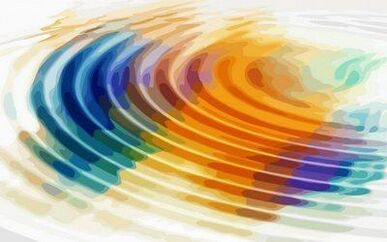
In order for this complex system to work and for the body to have time to get rid of damaged cells, replacing them with new ones, a source is needed that would put all this into action, into motion. One such source is the microvibration that occurs in the body as a result of the work of muscle cells (myofibrils). Microvibration is always present in the body, including during sleep. Even with maximum relaxation, many muscle cells continue to work and create microvibration of the intracellular fluid around them.
It is known that about 60% of body cells are muscle cells and they consume more than 80% of all energy generated in the body. And almost half of this energy expenditure is needed to maintain the resting microvibration level or background microvibration. Such colossal expenditure of energy does not occur without reason; they are necessary for human life. Lack of microvibration in the body means death, and its absence means disease.
Likewise, with hypertension, if there is a lack of microvibration in the body for a long time, the cells begin to perform their function much worse, which leads to the fact that the tissues begin to "score" and the functional cells work. worse and die. This worsens the functioning of vital organs - kidneys; problems arise in the spine, which causes a deterioration of the blood supply to the brain and spinal cord. And problems with these organs are the most common causes of hypertension and, in general, a decrease in the tone of the whole organism.
Hypertension and hypertension - what are the differences?
There are so many terms and designations in the world of medicine that sometimes it is very difficult for an ordinary person to understand and understand what is happening to his body, what do all these abbreviations and diagnoses mean? First of all, let's define what is the difference between hypertension and hypertension, what is the difference?
Hypertension is a condition of high blood pressure. And hypertension is already a disease that affects the whole body and one of the symptoms of which is hypertension. The degree of organ change that causes high blood pressure is the stage of the disease.
In the modern, accepted medical classification, there are 3 degrees of arterial hypertension:
Type of blood pressure and degree of hypertension |
Systolic blood pressure, mm Hg. Art. |
Diastolic blood pressure, mm Hg. Art. |
|---|---|---|
Normal |
Less than 130 |
Less than 85 |
Up |
130-139 |
85-89 |
Hypertension grade I (mild) |
140-159 |
90-99 |
II degree of hypertension (moderate) |
160-179 |
100-109 |
Grade III hypertension (severe) |
Greater than or equal to 180 |
Greater than or equal to 110 |
Complications and consequences of hypertension
To understand exactly how persistently elevated blood pressure leads to terrible complications, what kind of disease hypertension is and why exactly it is dangerous, let's consider the mechanism of development (pathogenesis) of hypertension.
Long-term high blood pressure (hypertension) often leads to irreversible consequences, especially in the vascular bed:
- thickening of blood vessel walls, reducing their elasticity;
- narrowing of the lumen of small arteries of blood vessels on a permanent basis;
- thickening of the heart muscle (myocardium);
- increased damage to the walls of blood vessels due to the high rate of blood flow, the formation of atherosclerotic plaques in the places of damage.
Since it is the vascular system, in fact, that is the supplier and carrier of external resources, let's see what happens to it with prolonged high blood pressure. Normally, the wall of blood vessels is elastic, which allows the body to quickly adapt to constantly changing conditions. But in a situation of constant high pressure and lack of microvibration, the vascular wall thickens and loses its elasticity. This happens mainly because the body, for a variety of reasons (physical inactivity, poor nutrition, excess weight, etc. ), experiences a lack of microvibration, the immune system does not have time to "recycle" dead cells, and living cells cannot. fully perform their duties. The body is forced to urgently get rid of dysfunctional and dead cells. One of the ways to get rid of them is to turn them into a stable structure - connective tissue, or fibrosis. On the other hand, fibrosis in the walls of blood vessels significantly reduces their elasticity and strength, which can lead to damage to the vessel and hemorrhage from it. This situation is especially dangerous in the brain, as it can lead to a stroke.
In addition, most organs do not need high pressure at all, and a protective mechanism is activated - spasm (narrowing) of small arteries to reduce blood flow through them. This simply consumes a colossal amount of the whole body's resources, which cannot last long. Therefore, to save resources, the walls of blood vessels thicken again and muscle cells are replaced by connective cells, and then a reverse increase in the lumen of blood vessels becomes impossible.
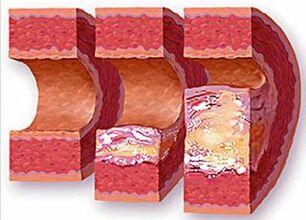
This inflexibility of the vascular wall leads to the formation of microtraumas of the wall and the deposition of cholesterol there. This results in a narrowing of the vessel in a certain area. This means that the organs and tissues do not receive their share of nutrients, which means that they will not be able to fully perform their function. The heart, on the other hand, is forced to work with increased force to pump blood through such inelastic (narrowed) vessels, which means that it has no choice but to increase the mass of cardiac cells - myocytes. This condition is called myocardial hypertrophy. And everything will seem to be fine, but the coronary vessels, which are intended to feed the heart, do not become larger and the so-called lack of blood supply to the myocardium occurs - ischemia. And if an atherosclerotic plaque grows on the altered wall of the coronary artery, then there is a high risk of complete interruption of the blood supply to the myocardium in this area - the death of a part of the myocardium occurs - a heart attack.
Stroke, heart attack and atherosclerosis are the most common complications of hypertension and causes of sudden death.
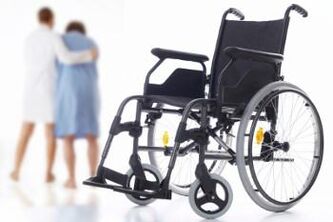
Is it possible to get disability if you have hypertension?
Disability is the inability to perform normal household activities and provide self-care. With the progression of hypertension, when all the body's resources are exhausted, the development of heart failure begins. It is clear from the name that in this condition, the heart simply cannot perform its main function - supplying organs and tissues with oxygen. When heart failure becomes critical, a person suffers a significant loss in quality of life, and even putting a kettle in the kitchen becomes equivalent to a heroic achievement. Of course, in such conditions a person is given disability due to hypertension.
Conditions and causes of hypertension
What are the main causes of hypertension? What causes this whole cascade of reactions and what causes the disease?
Our body, as we have already mentioned, is an internal universe made up of billions of cells that all work as a single unit. The incredible processes of self-regulation of this universe allow a person to live and survive in environmental conditions. Everything that happens in the body is not random and conditioned by something, it is necessary for something.
To understand what might be causing a person's hypertension, we need to turn our attention back to the cells. For every cellular process it is necessary that cellular components (proteins, fats, carbohydrates) can meet in space. The already known microvibration of the surrounding inner space plays a big role in this. With the lack of microvibration, first of all, the cellular function is disrupted, and this, along the chain, leads to disruption of the nutrition of the spinal cord, kidneys, brain and, as a final consequence, the development of hypertension. At the same time, it is important to understand that if the body increases blood pressure, then for some reason it is necessary. It would be more accurate to say - vitally important! However, the causes of hypertension in men and women are largely similar.
Insufficient kidney function

The kidneys are the only human organ that physiologically requires high blood pressure, as the blood must pass under pressure through special membranes to purify it. At pressure below 80 mm Hg. Art. the kidneys stop filtering (purifying) the blood, and this is fatal.
Therefore, the body cannot under any circumstances allow the kidneys to reduce or stop filtration. If for some reason the kidneys cannot cope with filtering (cleaning) the blood, then the brain receives an order to increase the blood pressure to increase the productivity of the kidneys. This is one of the most common causes of hypertension.
In this case, the kidneys themselves may be fine, but the general "pollution" of the blood may exceed the ability of the kidneys to clean it at normal pressure. Therefore, the body must increase the performance of the kidneys by increasing the blood pressure.
In this case, it is enough to improve kidney function and the pressure will normalize. And kidney function can be improved by a more intensive supply of cells with food and their cleaning of waste products. To do this, it is enough just to increase the level of microvibration (microcirculation) in the kidney area. In addition, the kidneys are one of the few organs that do not have their own muscle fibers, so they receive microvibrations from the neighboring working muscles of the abdomen and back. From this point of view, it becomes clear how physical inactivity, wrong posture and increase in the proportion of adipose tissue lead to deterioration of kidney function and, as a consequence, to hypertension. Therefore, in order to improve the functioning of the kidneys and interrupt this entire chain, we again come to the conclusion that it is enough to normalize the level of microvibration of the kidneys.
Currently, there is only one device in the world that can specifically increase the level of microvibration in any human organ. We are talking about a unique development - medical equipment for vibroacoustic effects and a method - phonation.
The effectiveness of treating hypertension using these devices has been confirmed by many studies.
Impaired blood supply to the brain
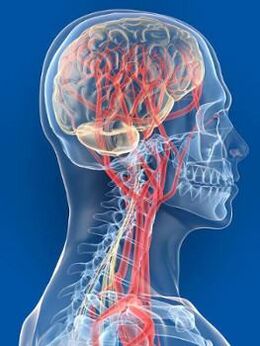
Another cause may be an interruption in the blood supply to the brain or spinal cord due to narrowing or narrowing of the arteries. This can happen as a result of problems in the spine (osteochondrosis, intervertebral hernia), congenital features of the vascular bed, which can worsen over time due to atherosclerosis.
The body cannot tolerate interruptions in the blood supply to the brain, so it increases the pressure in order to push the required volume of blood through the existing narrowed vessels.
Then, correcting the problem with the blood supply to the brain or spinal cord can reduce the pressure. Vibroacoustic therapy using devices can also be used for this purpose. With the help of special transducers (vibraphones), the mechanical microvibration of the device is transmitted by contact to the human body at a depth of 10 cm and leads to an increase in microcapillary circulation of blood and lymph. And this, in turn, leads to improved cell nutrition and timely removal of their waste products.
Thus, with the help of phonation, it is possible to eliminate swelling in the spine due to osteochondrosis or intervertebral hernia, which will allow you to "loosen" the constricted arteries and improve the blood supply to the brain.
Eating disorder
Overloading the body with simple carbohydrates, fats, alcohol, nicotine, etc. , leads to the fact that a large amount of resources are spent at their disposal (neutralizing and cleaning them), and as a result, the body simply does not have time. to restore the cellular balance in the vascular system, a lack of resources appears, which leads to the development of hypertension. All these factors lead to the fact that even young organisms experience a lack of resources and as a result, in the modern world we are increasingly facing hypertension in young people.
Hormonal disorders
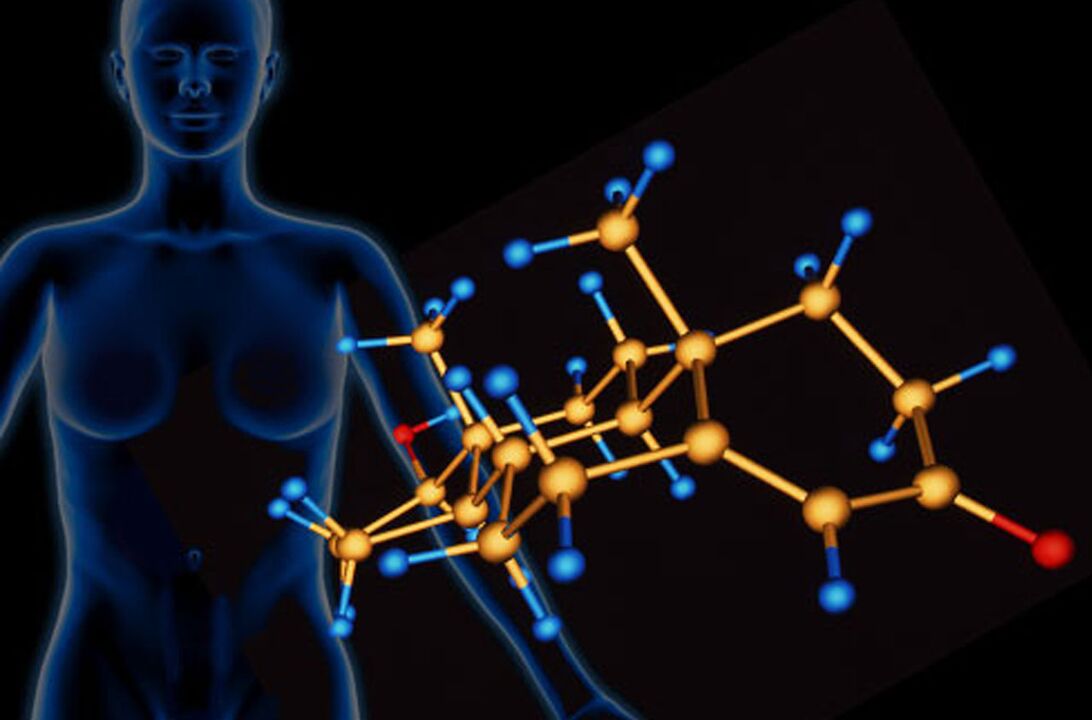
It is absolutely known that hormonal levels significantly affect blood pressure. The body has a complex interaction between the entire endocrine system, which includes glands located in the brain (pituitary and hypothalamus) and glands present in the rest of the body (thyroid, parathyroid, reproductive). These glands must normally ensure the balance of the body's internal environment, including the stability of blood pressure. With the lack of microvibration, as we have already discovered, nutrition and all vital functions at the cellular level suffer, which means that with the lack of microvibration, the entire endocrine system, which, by the way, is very sensitive to the lack. of nutrients, will function erratically and intermittently. Hormonal levels are disrupted and blood pressure will "jump". It is enough to normalize the blood supply and improve the microvibration of the endocrine glands so that the hormonal levels return to normal.
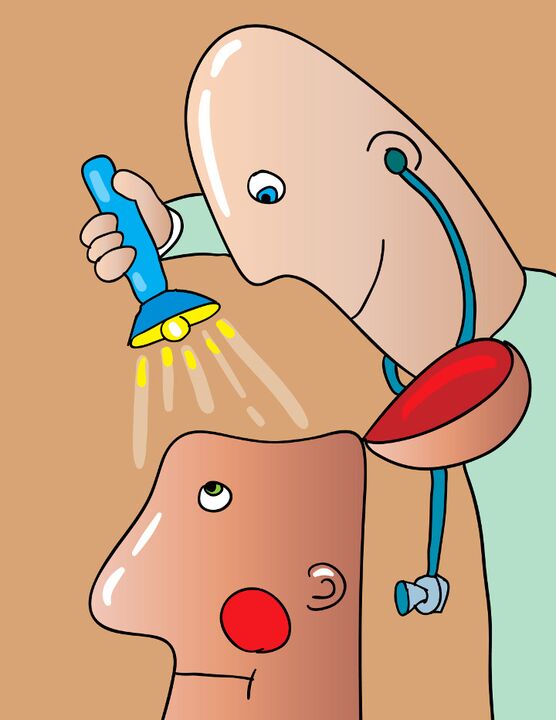
Psychosomatics
In our fast-paced era, we must not forget the so-called psychosomatics and its contribution to hypertension. The fact is that with constant psychological stress, a sea of biologically active substances are released into the blood, which increase vascular tone and pressure. Constant stress and strong negative emotions lead to an increase in muscle tone, and this very quickly depletes the body's resources, and then all body functions decrease, which creates conditions for the appearance of disease. In this case, it is necessary not only to normalize the microvibration background, but also to pay attention to the emotional component.
Age characteristics
Hypertension at a young age, in children and adolescents, stands apart. As a rule, the cause in these cases is most often endocrine (hormonal) disorders or diseases of the spine. At the same time, "adult" drugs cannot always cope with hypertension in this group of patients without harming the child's body. Therefore, the task of using methods to reduce the doses of drugs used arises. One such method is phonation. The effectiveness of reducing drug doses or even the ability to do without them has been confirmed by research.
Hypertension in the elderly also has its own characteristics, because. . . choosing the dose of drugs due to concomitant diseases can be very difficult, and often the doctor finds himself at a kind of "fork" - when the prescription of drugs to lower blood pressure leads to deterioration of the functioning of other organs. And in this case, phonation can come to the rescue, which is safe and effective when used in elderly patients.
Phonics is a modern effective non-drug method for the treatment and prevention of hypertension

The effectiveness of the method is confirmed by medical research, clinical practice and reviews by doctors. Treatment and prevention of hypertension is carried out using compact medical devices with vibroacoustic impact. The advantage of the method is the ability to independently perform the procedures at home, as well as the absence of side effects and a small number of contraindications.



























